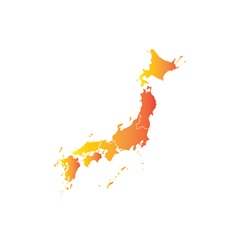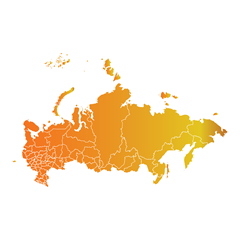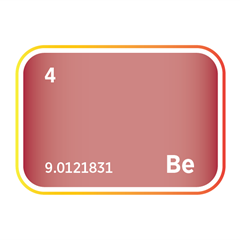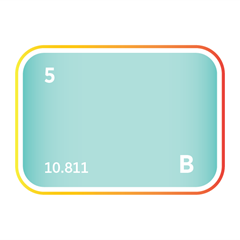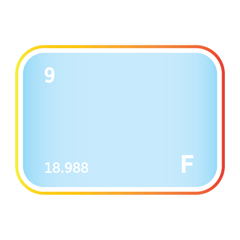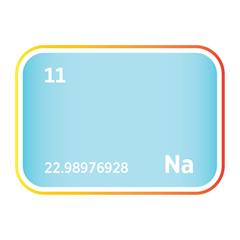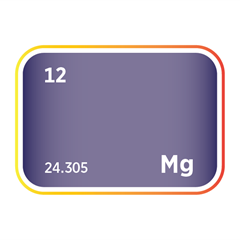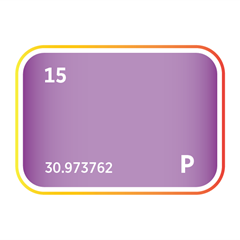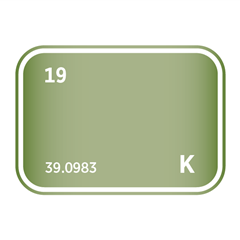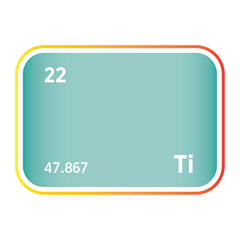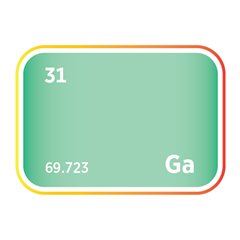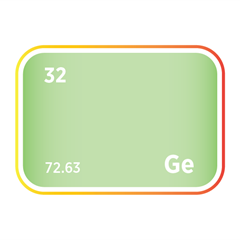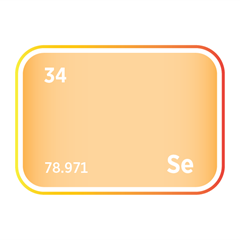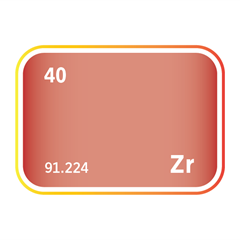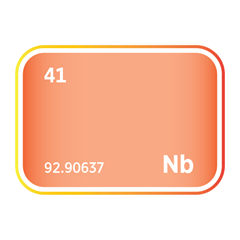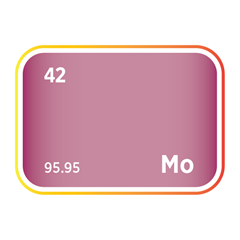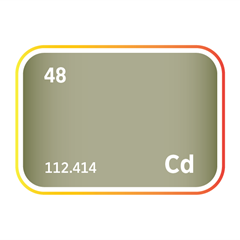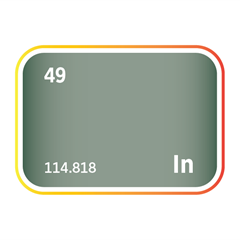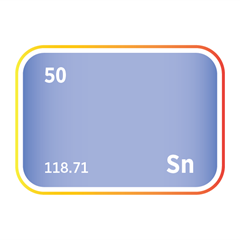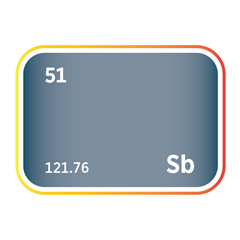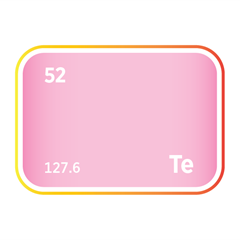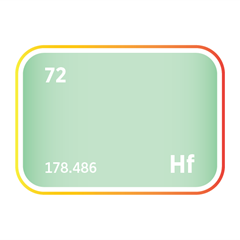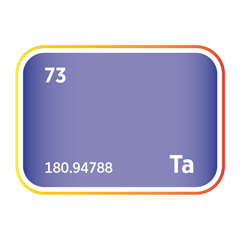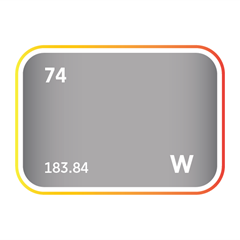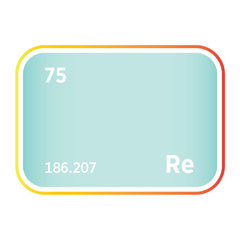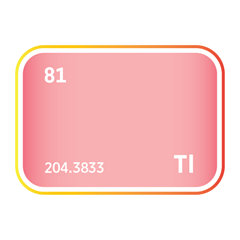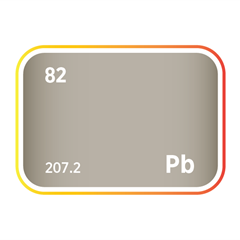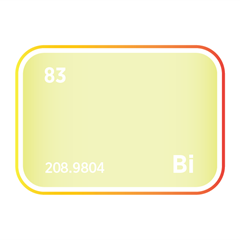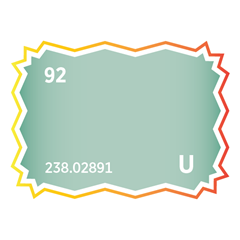Iodine
Critical Minerals and The Energy Transition
Navigating the Iodine Market
Iodine is a rare, biologically essential halogen with unique physicochemical properties that support a wide range of health, industrial, and technological applications. While global production is relatively modest, iodine plays a critical role in human nutrition, medical imaging, pharmaceuticals, electronics, water treatment, and advanced materials. Its high atomic number and ability to form stable compounds make it particularly valuable in diagnostic radiology, where iodinated contrast agents remain irreplaceable. In the chemical sector, iodine functions as a catalyst and reagent in complex syntheses, while in electronics it is used in liquid crystal displays and specialised optical coatings. Iodine radioisotopes are vital to cancer treatment and thyroid diagnostics, reinforcing its importance in modern healthcare systems. With global supply concentrated in Chile and Japan, and minor contributions from the United States and China, iodine is geopolitically exposed and structurally constrained. As demand rises across healthcare, clean technology, and strategic industries, iodine is increasingly viewed not only as a versatile industrial input, but as a critical material central to health security, innovation, and supply chain resilience.
An introduction to iodine
Iodine demand and end-uses
Iodine is a dense, violet-black halogen element essential to both biological systems and a wide range of industrial processes. Its unique physicochemical properties, including high atomic number, strong electron affinity, and versatile oxidation states, make it vital across sectors ranging from pharmaceuticals and healthcare to electronics, chemical synthesis, and nuclear energy. Despite modest global production volumes relative to base metals, iodine is designated as a critical raw material in several jurisdictions due to its limited sources of supply, low substitutability in core applications, and its strategic importance in healthcare, chemical synthesis, and electronics, with a growing footprint in medical imaging, diagnostics, and emerging clean technologies.
The largest end-use of iodine globally is in human and animal health, accounting for >60 percent of demand. Iodine is an essential micronutrient required for thyroid hormone production, and its deficiency can lead to cognitive impairments, goitre, and developmental disorders. As a result, iodised salt remains the dominant delivery mechanism in public health nutrition, supported by WHO-led universal salt iodisation programmes. In the animal feed sector, iodine is added to ensure livestock health and productivity, particularly in intensive farming systems where natural dietary intake is insufficient. These nutritional applications represent a steady and policy-supported demand base.
In pharmaceuticals, iodine is indispensable in the formulation of contrast media used in medical imaging. Iodinated contrast agents are widely employed in X-ray, CT, and angiography procedures, enabling enhanced visualisation of blood vessels, organs, and tumours. This application requires high-purity iodine derivatives, and demand is closely tied to healthcare infrastructure development, particularly in ageing populations and diagnostic-intensive systems. Iodine is also used in antiseptics, including povidone-iodine solutions and surgical disinfectants, due to its broad-spectrum antimicrobial properties.
In the chemical industry, iodine serves as a catalyst, reagent, and stabiliser across numerous applications. It is a key component in the production of iodophors, iodine-based resins, and halogenated organic compounds used in agrochemicals and dyes. Iodine also plays a vital role in ephedrine synthesis, acetaldehyde production, and methyl iodide formation, with demand driven by pharmaceuticals, crop protection, and speciality chemicals. Its high reactivity and ability to form strong covalent bonds make it a valuable intermediate in complex organic chemistry.
Electronics and optics constitute a growing area of iodine demand. Iodine compounds are used in the manufacture of liquid crystal display (LCD) polarising films, where they align polymer films to control light transmission. This application is closely tied to consumer electronics, automotive displays, and photovoltaic panels. Iodine-based solutions are also used in optical coatings, photographic chemicals, and metal halide lamps, though some of these applications are being phased out or displaced by solid-state technologies.
In nuclear energy and radiopharmaceuticals, iodine plays a dual role. Non-radioactive iodine is used in corrosion inhibitors and chemical stabilisation in reactors, while radioisotopes such as Iodine-131 and Iodine-123 are critical for thyroid imaging, cancer diagnostics, and targeted radiotherapy. These isotopes are typically produced via uranium fission in research reactors and require robust handling, short supply chains, and regulatory oversight. The healthcare sector's reliance on radioiodine underpins its strategic medical importance, particularly in oncology and metabolic imaging.
Iodine is also used in water treatment, particularly in portable and field-deployable systems for military, humanitarian, and outdoor use. Iodine-based disinfectants offer rapid action against bacteria and viruses in drinking water, complementing chlorine-based systems. Though a niche application in volume, it is critical for emergency response, disaster relief, and remote deployment scenarios.
In advanced energy systems, iodine has niche but emerging applications. Aluminium-iodine and lithium-iodine batteries are being explored for high-energy-density, long-life power sources, particularly for medical implants and aerospace-grade electronics. While these chemistries are currently limited to specialised use cases, they exemplify iodine’s potential in next-generation electrochemical systems.
Photography, once a major consumer of iodine compounds such as silver iodide, has seen steep demand decline with the transition to digital imaging. However, silver iodide remains in use in cloud seeding, where it acts as a nucleating agent to stimulate precipitation. This application, while regional and weather-dependent, is relevant in water-stressed areas and agricultural planning.
With global supply dominated by Chile and Japan, and minor production in China and the United States, iodine remains highly geographically concentrated. Its inclusion in critical raw material frameworks reflects the combination of strategic importance, low substitutability, and constrained supply. As health systems expand, electronics proliferate, and climate resilience efforts intensify, iodine’s multifaceted role in modern economies is becoming increasingly apparent. Ensuring secure access to high-purity iodine will be essential for health resilience, technological innovation, and industrial sustainability in the decade ahead.
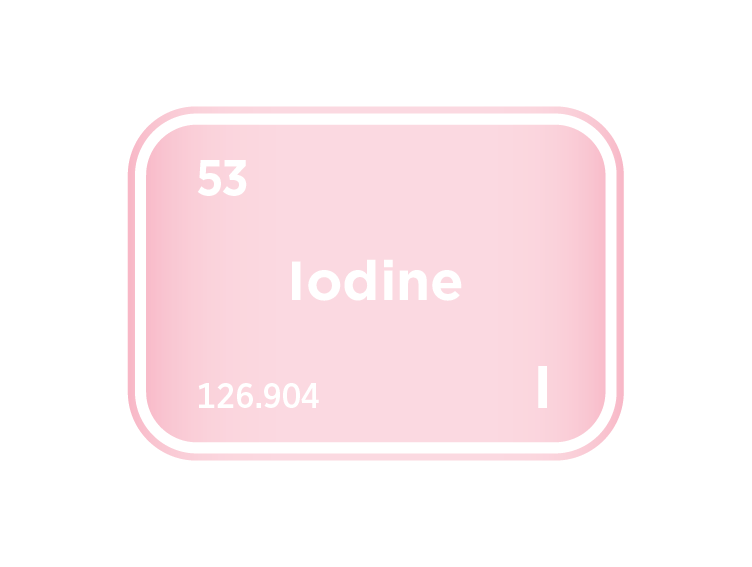
Iodine supply
Iodine supply is highly concentrated, with over >90% of global production sourced from just three countries: Chile, Japan, and the United States. This narrow geographic base, combined with iodine’s role in essential healthcare, defence, and industrial processes, has led to its designation as a critical mineral by the European Union and a strategic material under US federal supply chain assessments.
Chile is by far the largest producer, accounting for approximately 55-60% of global output. Chilean iodine is extracted as a primary product from caliche ore in the arid Atacama Desert. These surface deposits, unique to northern Chile, contain soluble iodine compounds, primarily calcium iodate and sodium iodate, which are leached and refined through a series of evaporation, acidification, and crystallisation steps. Major producers such as SQM and Cosayach dominate this segment and supply a significant share of the world's iodine for pharmaceutical, industrial, and radiological applications. Chile’s production benefits from well-established logistics, export infrastructure, and integration with nitrate fertiliser operations, but remains exposed to water scarcity, regulatory shifts, and growing ESG scrutiny due to the environmental footprint of open-pit extraction and evaporation-based processing.
Japan is the second-largest iodine producer, responsible for around 30% of global supply. Unlike Chile, Japanese iodine is not mined from solid ores but recovered as a co-product of natural gas extraction. Iodine-rich brines, brought to the surface during gas production in the Chiba, Niigata, and Akita regions, are processed using ion-exchange and oxidation methods. Japan’s iodine output is highly refined, feeding demanding applications such as medical imaging contrast agents and semiconductor manufacturing. However, its production is constrained by the pace of natural gas output, high energy costs, and the country’s vulnerability to seismic risk. Japanese supply is considered highly stable from a technical standpoint, but fragile in the event of natural disasters or energy infrastructure disruption.
The United States, primarily through operations in Oklahoma, contributes a smaller but strategically important share of global iodine supply. Here, iodine is also recovered from iodine-rich brines extracted alongside oil and gas. Companies such as Iofina and Woodward Iodine produce elemental iodine and value-added derivatives using environmentally controlled processes. While US production accounts for under 5 percent of global supply, its domestic sourcing reduces import dependence for sectors like healthcare and defence. Expansion of US iodine output is limited by the availability of suitable brine sources and the co-dependence on hydrocarbon production.
Secondary iodine supply is minimal but growing in importance. Iodine recovery from spent contrast media, industrial waste streams, and pharmaceutical effluents is technically feasible, but often economically constrained by low concentrations and high purification costs. Pilot-scale recycling initiatives are underway in Europe, particularly to reduce environmental discharge from radiological facilities and improve circularity in medical imaging supply chains. However, at present, recycled iodine accounts for <2% of total global supply.
Geopolitical concentration presents a persistent risk. With two countries, Chile and Japan, controlling the overwhelming majority of global output, supply chains are exposed to regional disruptions, natural hazards, and trade policy shifts. Chile’s industry has faced occasional regulatory delays, social unrest, and environmental licence challenges. Japan’s iodine production, while technologically advanced, remains vulnerable to earthquake risk and offshore energy import dependencies. These factors have prompted importing nations, particularly in Europe, North America, and East Asia, to classify iodine as a priority material for diversification and stockpiling.
In terms of trade, iodine is shipped globally as elemental iodine, potassium iodide (KI), or calcium iodate, depending on its final application. Pharmaceutical-grade iodine requires high-purity processing and traceability standards, especially in radiopharmaceuticals, while technical-grade material is more widely used in industrial catalysis, water treatment, and chemical synthesis. Japan, Chile, and the US are all major exporters, but China is the largest single importer of iodine, driven by its domestic demand for LCD production, electronics, and contrast agents.
Environmental and regulatory factors are becoming increasingly important. While iodine itself is not considered hazardous in elemental or iodide forms, iodine oxides and certain organoiodine compounds can pose toxicity risks to aquatic life and require strict handling protocols. In regions with groundwater contamination concerns or industrial iodine discharge, regulatory bodies are beginning to mandate capture and treatment systems. Moreover, the water- and energy-intensive nature of Chilean iodine production has brought ESG performance into focus among downstream buyers in the pharmaceutical and electronics sectors.
Looking ahead, global iodine supply will face competing pressures: rising demand from medical imaging, diagnostics, and electronic components; constrained geographic production; and mounting environmental and geopolitical risk. Efforts to diversify sources, enhance recycling, and develop substitute chemistries will shape the long-term security of supply. In the interim, iodine remains a strategically exposed but economically essential material, whose secure sourcing is increasingly intertwined with health resilience, technological capability, and industrial sovereignty.
Current iodine mine producers
Iodine substitution
Iodine’s value lies in its versatility across biological, industrial, and technological systems, ranging from human health and pharmaceuticals to electronics, catalysis, and nuclear medicine. Despite its relatively low global production volume, iodine’s unique properties, including its high atomic number, strong electron affinity, and low toxicity in biological systems, make it difficult to substitute in many core applications. Where substitution is possible, it typically entails trade-offs in performance, cost, environmental impact, or regulatory compliance. Substitution potential therefore varies significantly by sector and use case.
In human and animal nutrition, iodine is biologically essential for the synthesis of thyroid hormones. There is no substitute for iodine in physiological terms. Deficiency leads to goitre, developmental disorders, and impaired cognitive function. Substitution in this context would not involve replacing iodine itself, but rather delivering it through alternative compounds, such as potassium iodide (KI), calcium iodate (Ca(IO₃)₂), or newer encapsulated forms to enhance stability in fortified foods or salt. The only relevant discussion here is on the delivery mechanism and bioavailability, not on substitution per se.
In medical imaging, particularly iodinated contrast agents used in X-ray and CT scans, substitution is possible but constrained. Gadolinium-based contrast agents (GBCAs) are used in MRI imaging, and microbubble contrast agents are emerging for ultrasound. However, these are not functional substitutes within the same modality, they serve different imaging technologies. Within CT imaging, iodine’s high atomic number and electron density make it uniquely effective for enhancing soft tissue contrast. Emerging approaches using gold nanoparticles or bismuth-based compounds are under investigation, but these remain largely in the R&D phase, are more expensive, and have yet to achieve regulatory approval at scale. For the foreseeable future, iodine remains functionally irreplaceable in diagnostic radiology.
In pharmaceutical antiseptics, such as povidone-iodine (PVP-I), substitution is technically feasible using chlorhexidine, hydrogen peroxide, alcohol-based sanitisers, or silver-based compounds. However, povidone-iodine offers broad-spectrum antimicrobial activity, low resistance potential, and good tolerability on mucous membranes. Alternatives may lack this combination of efficacy and safety or be more costly. Substitution is common in hospital protocols based on availability and patient sensitivity, but iodine remains a preferred option in pre-surgical and wound-care settings globally.
In the chemical sector, iodine’s role as a catalyst or reagent can be substituted in certain processes. For example, in some halogenated organic synthesis, bromine or chlorine compounds can serve similar purposes, albeit often requiring higher temperatures, longer reaction times, or producing lower yields. In hydrogenation and polymerisation reactions, metal-based or enzyme catalysts can occasionally replace iodine-based systems, but they often require re-engineering of process flows and come with different environmental or regulatory considerations. In methyl iodide production, there are limited alternatives due to its unique volatility and methylation properties. Substitution may be technically possible but rarely process-neutral.
In electronics, particularly LCD polarising films, iodine is used to align polyvinyl alcohol (PVA) layers to modulate light transmission. Substitution here is limited. Dichroic dyes, metal oxides, and other organic compounds have been explored, but they often suffer from reduced clarity, colour fidelity, or UV resistance. As display technology evolves towards OLED and microLED platforms, some of this demand may naturally decline, though these are technological displacements, not functional substitutes for iodine within LCD architecture.
In nuclear medicine, radioactive isotopes such as Iodine-131 and Iodine-123 are used for thyroid imaging and cancer therapy. Alternatives such as technetium-99m, lutetium-177, or fluorine-18 serve different diagnostic or therapeutic functions, but cannot replace iodine in thyroid-specific applications due to the organ’s natural uptake of iodide. Iodine isotopes thus remain biologically and functionally unique. While other radioisotopes may support general oncology diagnostics or neuroimaging, they do not displace iodine’s niche in endocrine oncology.
In water purification, iodine-based disinfectants can be substituted with chlorine, chloramines, or ozone, depending on context. Chlorine is more widely used in municipal systems due to cost and availability, but iodine offers superior portability, stability, and performance in cold or turbid water, making it preferred in military, expeditionary, and emergency relief scenarios. In such use cases, substitution is technically viable but often functionally inferior.
In photographic chemicals and silver halide applications, silver iodide has largely been displaced by digital imaging technologies, not by chemical substitutes. However, silver iodide remains used in cloud seeding, where alternative nucleating agents such as potassium chloride, urea, or calcium carbonate have been trialled. These offer varying results depending on atmospheric conditions, but silver iodide remains the benchmark for effectiveness.
In emerging battery chemistries, such as lithium-iodine or aluminium-iodine systems, iodine is valued for its redox behaviour, low molecular weight, and ionic conductivity. These technologies currently target niche markets like implanted medical devices or aerospace systems, where substitution may be technically possible using fluorine-based solid-state batteries or lithium-sulphur systems, though these come with their own material and engineering constraints.
Overall, iodine substitution is highly application-specific. It is not substitutable in biological systems, and only partially so in imaging, antiseptics, and electronics. Where substitution is feasible, it often introduces new trade-offs in safety, performance, regulatory approval, or process economics. For most critical applications, particularly in healthcare, radiopharmaceuticals, and advanced electronics, iodine remains indispensable, reinforcing its status as a strategic element with low elasticity of demand and heightened supply chain vulnerability.



Meet the Critical Minerals team
Trusted advice from a dedicated team of experts.

Henk de Hoop
Chief Executive Officer

Beresford Clarke
Managing Director: Technical & Research

Jamie Underwood
Principal Consultant

Dr Jenny Watts
Critical Minerals Technologies Expert

Ismet Soyocak
ESG & Critical Minerals Lead

Thomas Shann Mills
Senior Machine Learning Engineer

Rj Coetzee
Senior Market Analyst: Battery Materials and Technologies

Franklin Avery
Commodity Analyst

How can we help you?
SFA (Oxford) provides bespoke, independent intelligence on the strategic metal markets, specifically tailored to your needs. To find out more about what we can offer you, please contact us.

